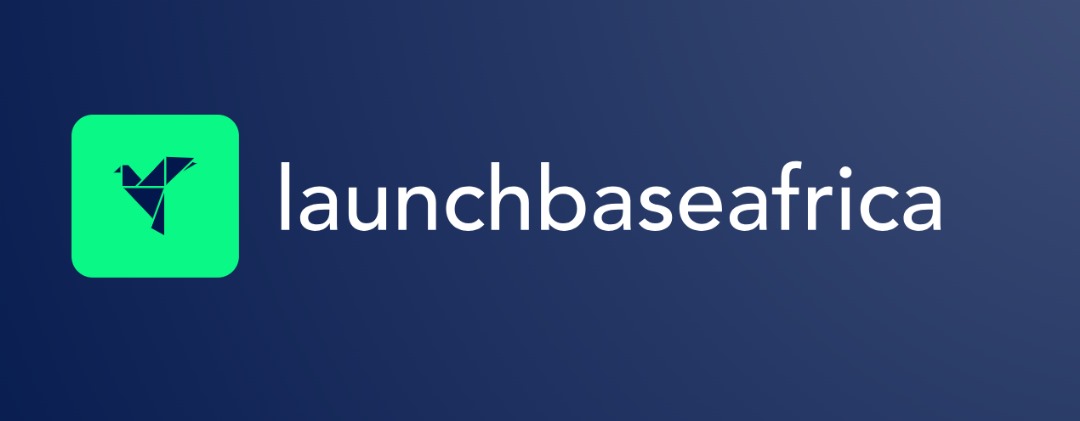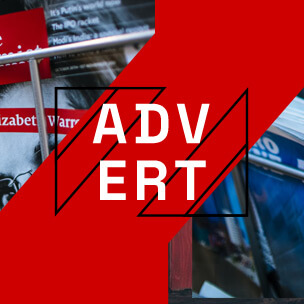Nigeria, Egypt, Kenya, and South Africa may hoover up the vast majority of Africa’s venture capital, but a 2025 analysis of tech funding activity shows they aren’t one market; they’re four distinct ecosystems with opposing priorities.
What’s most revealing isn’t what gets funded, but what’s systematically ignored.
For example, why is Nigeria, a consumer tech ‘blitzscaling’ machine, a ghost town for deep tech? Why is Kenya, the global hub for DFI-backed climate tech, a graveyard for e-commerce? And why are Egyptian founders, flush with Gulf capital, allergic to building for sub-Saharan Africa?
It’s not for lack of talent. It’s because of who writes the cheques.
This report analyses the sector-specific blind spots for each of the Big Four and provides a detailed breakdown of the investor profiles shaping these markets in 2025.
The Big Four: Sector Blind Spots
Nigeria:
In 2025, Nigeria’s ecosystem is famous for its ability to build and “blitzscale” consumer startups. But ask where the deep tech, university spinouts, or serious B2B SaaS companies are, and you’ll largely draw a blank.
What’s Missing:
- Deep Tech: Funding data from 2025 reveals a significant divergence in technological development, with Egypt cultivating deeptech capabilities — including semiconductor firms like InfiniLink — an area where Nigeria shows no market presence.
- B2B SaaS: Although Nigeria has funded B2B SaaS, this sector is dominated by South Africa (Stitch, Trade Shield, etc.).
- Academic Spinouts: South Africa has a track record of commercialising university IP (e.g., hearX from university professors; Altera Biosciences, etc.). This is virtually non-existent in Nigeria.
- Insurtech & Space Tech: Both are empty categories compared to peers.
The ‘Why’: The gaps are structural. The country lacks major deeptech manufacturing base and a formalised process for university IP commercialisation. More importantly, Nigeria’s SME-driven economy is still largely informal, making it difficult to sell recurring software licences to small businesses that struggle to pay.
Egypt:
From the 2025 funding data, it does appear that Egypt’s founders are increasingly building high-growth startups, but their gaze is fixed firmly north and east (to the MENA region), not south to sub-Saharan Africa.
What’s Missing:
- Pan-African Products: Founders build for Egypt and the Gulf, not for Kenya or Nigeria.
- Climate/Clean Energy at Scale: While Kenya has deployed over $300M into this space, Egypt is near-zero.
- Enterprise B2B SaaS: The focus is on consumer and SME, not large-scale enterprise contracts.
- Agritech: Despite a massive agricultural sector, it remains highly informal and undigitised.
The ‘Why’: The language barrier (Arabic) and strong cultural orientation toward the Gulf direct talent and capital. In climate, cheap grid electricity from the Aswan Dam has stifled the urgent commercial demand for solar that powers Kenya’s market. Finally, with government and state-owned enterprises dominating the economy, there’s a smaller, less dynamic market for enterprise startups to sell into.
Kenya:
Kenya may be the king of mobile money and the continent’s leader in climate securitisation (like Sun King’s $156M raise), but it has glaring gaps in two of tech’s biggest categories.
What’s Missing:
- E-commerce:The e-commerce landscape across Africa is highly fragmented. As players like Jumia vie for market share in Nigeria and Egypt, Kenya’s sector shows little activity. This is evidenced by a lack of startup funding in 2025 and the recent high-profile collapse of Copia Global.
- Consumer Fintech Lending: This was a booming sector, but it’s now a shadow of its former self. This trend was highlighted by the administration of Lipa Leta, a key player, an event that has raised significant concerns among investors this year.
The ‘Why’: Stubbornly high logistics costs and the dominance of cash have made e-commerce a tough nut to crack. The real story is in consumer lending, which was effectively kneecapped by a 2022 Central Bank regulatory crackdown that made the business model prohibitive for many.
South Africa:
As the continent’s most mature market, in 2025, South Africa seems to excel at the sectors Nigeria ignores: B2B SaaS, deep tech, and insurtech (like Naked Insurance). Its blind spot is the reverse of Nigeria’s.
What’s Missing:
- Blitzscale Consumer Products: You won’t find a typical VC -backed Nigerian-style startup burning cash to capture the mass market.
- Pan-African Logistics: Despite its advanced logistics infrastructure, it has no major players scaling across the continent this year with newly bagged VC funding (a space led by Kenya’s Lori Systems).
- Massive Debt Securitizations: Unlike Kenya, it hasn’t seen startups raise nine-figure debt deals for assets like solar.
The ‘Why’: The market dynamics are different. With a population of just 60m, the local market is often seen as too small to justify the high-burn, “winner-take-all” consumer model. Banks prefer lending to stable state-owned enterprises, and its geographic isolation at the southern tip of the continent possibly makes it a poor staging ground for pan-African logistics.
Investor Archetypes: Who Funds the ‘Big Four’?
These sector-specific gaps are a direct consequence of the investors who write the cheques. The investor DNA in each market in 2025 dictates which models get funded and which are ignored.
1. Nigeria: The US VC Darling
Nigeria’s ecosystem is defined by its strong pull for US-based venture capital, which is overwhelmingly focused on high-growth, consumer-facing fintech and B2C models.
- The Pattern: Nigeria is the clear favourite for US VCs, particularly seed-stage funds and accelerators. Local Nigerian capital is also highly active, while European VCs are more selective, preferring to make large, singular bets.
Key Players:
- US VCs (Heavy Presence): Y Combinator (Lemfi, Chowdeck), QED Investors (Raenest), MaC Venture Capital (Carrot Credit), Accion Venture Lab (PaidHR).
- European VCs (Selective): Highland Europe (a single $53M bet on Lemfi), Partech Africa (Carrot Credit), Norrsken22 (Raenest).
- DFIs (Climate Focus): BII (Babban Gona, Odyssey Energy) and Norfund (OmniRetail) are active, primarily in energy and agriculture.
- Local Nigerian VCs (Active): Ventures Platform (OmniRetail), All On (Arnergy, Salpha Energy), Aruwa Capital (OmniRetail), and Nubia Capital are prolific dealmakers.
2. Egypt: Dominated by Gulf Capital
Egypt’s funding landscape is intrinsically linked to the Middle East. Its startups build for an Arabic-speaking market, and its capital flows directly from the Gulf.
- The Pattern: The ecosystem is overwhelmingly funded by VCs from the UAE and Saudi Arabia. US VCs are rare. Local Egyptian funds are growing, often with backing from Gulf LPs or local banks.
Key Players:
- Middle Eastern VCs (Dominant):
UAE: Shorooq Partners (Octane), BECO Capital (Thndr), Global Ventures (Rabbit), e& (Nawy), PlusVC (Wuilt).
Saudi Arabia: Raed Ventures (Rabbit, Taager), Wa’ed Ventures (Intella), Hala Ventures (Intella), Khwarizmi Ventures (Khazna). - US VCs (Selective/Rare): Y Combinator (Thndr, Munify), 500 Global (Intella), and crypto-focused DCG (Munify).
- European VCs (Mostly DFI): The EBRD (Breadfast, MDP) is the most significant European player.
- Local & Government (Active): Algebra Ventures (Sylndr), Beltone Venture Capital (Rabbit), and Camel Ventures (Suplyd) are key local funds. Government bodies like MSMEDA and state-owned Banque Misr are also investing directly.
3. Kenya: The DFI and Japanese Stronghold
In 2025, Kenya’s market is a story of two investor classes: established European development finance institutions (DFIs) and a new, highly coordinated wave of Japanese corporate and venture capital.
- The Pattern: The largest cheques are written by European DFIs, almost exclusively for climate and energy tech. A defining 2025 trend is the emergence of Japanese investors as a dominant force. In contrast, local Kenyan VC funds are conspicuously absent or are “exporting” capital, investing in other African markets.
Key Players:
- Japanese Investors (New Dominant Force): A coordinated strategy is visible from Suzuki Global Ventures (Peach Cars), JBIC (Peach Cars), Sony Innovation Fund (Twiva), AAIC Investment (MyDawa), and GB-IX (Hakki Africa).
- European DFIs (Largest Capital Source): This is the backbone of Kenyan VC. BII (Arc Ride, SunCulture), Norfund (Sun King $156M, MOPO), FMO (Sun King), Mirova (Arc Ride, d.light), and Proparco (Badili) are heavily invested in climate.
- US VCs (Niche Plays): US capital is targeted at specific sectors, such as Flourish Ventures and the Stellar Development Foundation in blockchain (HoneyCoin), WaterEquity in climate (SunCulture), and Google’s Africa Fund in infrastructure (Open Access Energy).
- Local Kenyan VCs (Exporting Capital): This year, many prominent Kenya-based funds (E3 Capital, Enza Capital, KawiSafi Ventures) are actively investing, but primarily in deals outside of Kenya.
4. South Africa: The Self-Funded Market
South Africa operates as a mature, distinct ecosystem funded primarily by its own large, conservative financial institutions.
- The Pattern: Local capital from banks, private equity, and institutional funds accounts for the vast majority of funding, estimated at over 70%. US VCs are extremely rare but make headline-grabbing, outsized investments when they do appear.
Key Players:
- Local SA Investors (Dominant): Rand Merchant Bank (Wave, SolarAfrica), Investec (SolarAfrica, Nile), and Standard Bank Group (Paymenow) are the heavyweights. They are joined by active local funds like Knife Capital (Sticitt), E Squared Investments (Khula, TACO), and HAVAÍC (Sportable).
- US VCs (Rare but High-Value): US funds are largely absent, with two major exceptions: QED Investors’ $55M lead investment in Stitch and Patient Square Capital’s $100M private equity-style investment in hearX. Y Combinator has backed deep tech (Cerebrium).
- European VCs (Infrastructure/Niche): European capital often targets B2B or infrastructure, with firms like Speedinvest (Leta) and NEXT176 (Jem HR) participating.
- DFIs (Selective): DFIs are less active here than in Kenya, but notable players include the Development Bank of Southern Africa (Zero Carbon Charge) and Norfund (Etana).
Key Takeaways
In 2025, the “Big Four” are not a monolith; they are four distinct markets with unique investor appetites.
- Nigeria is a consumer-driven, US-backed market with a deep tech and B2B vacuum.
- Egypt is a MENA-focused market fueled by Gulf capital, leaving pan-African B2B and climate tech opportunities on the table.
- Kenya has become the global centre for DFI-funded climate tech, now joined by Japanese VCs, but its domestic consumer and e-commerce sectors remain hollowed out.
- South Africa is a mature, self-funded corporate and B2B market that struggles with consumer scaling, leaving it open to niche, high-value plays from foreign VCs.
For founders, success depends on aligning their model with the right investor profile. For investors, Africa’s significant tech opportunities may lie in the arbitrage: funding, in the coming months and years, the proven models that a market’s dominant investors routinely ignore.
Further reading:


